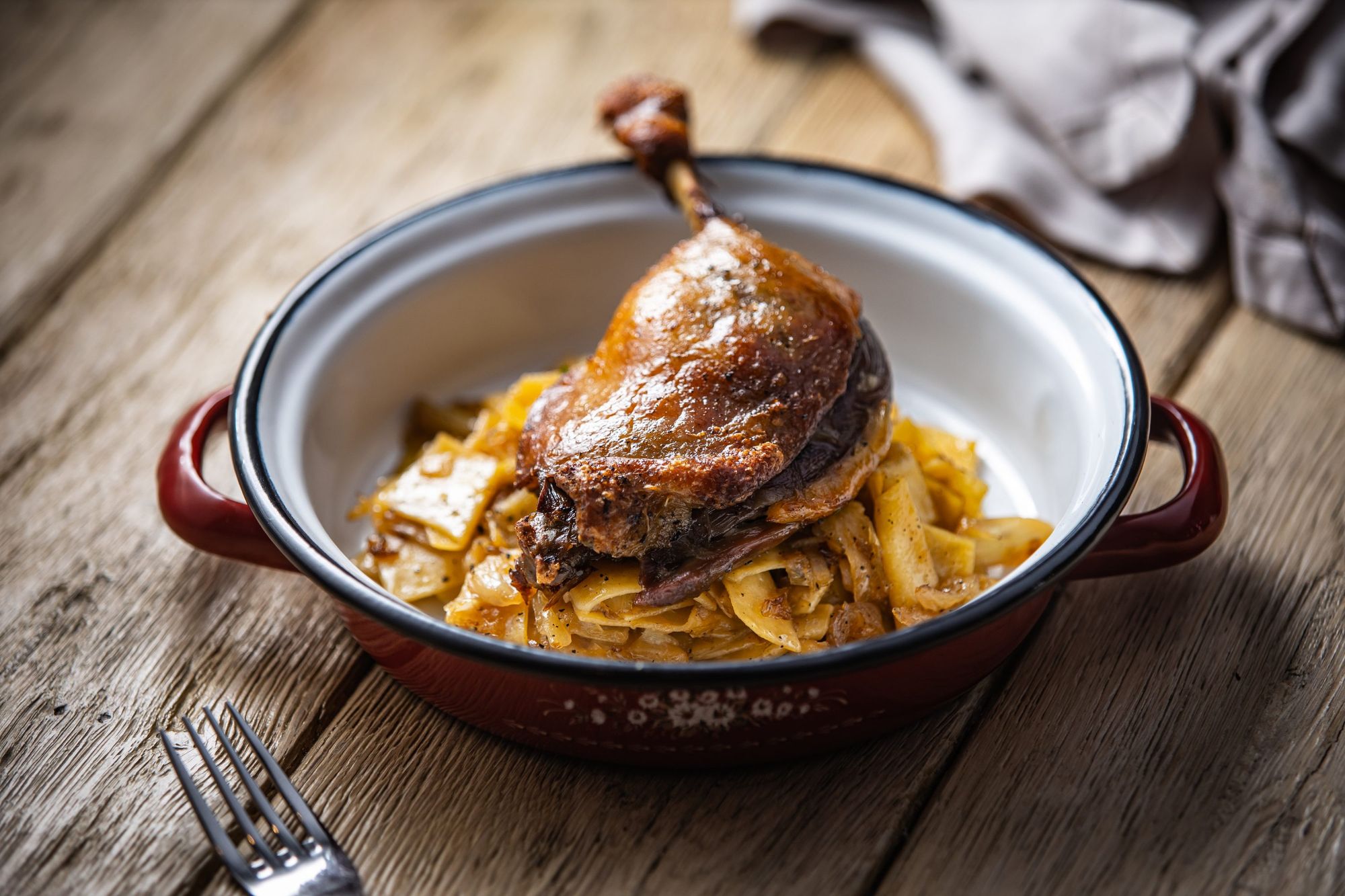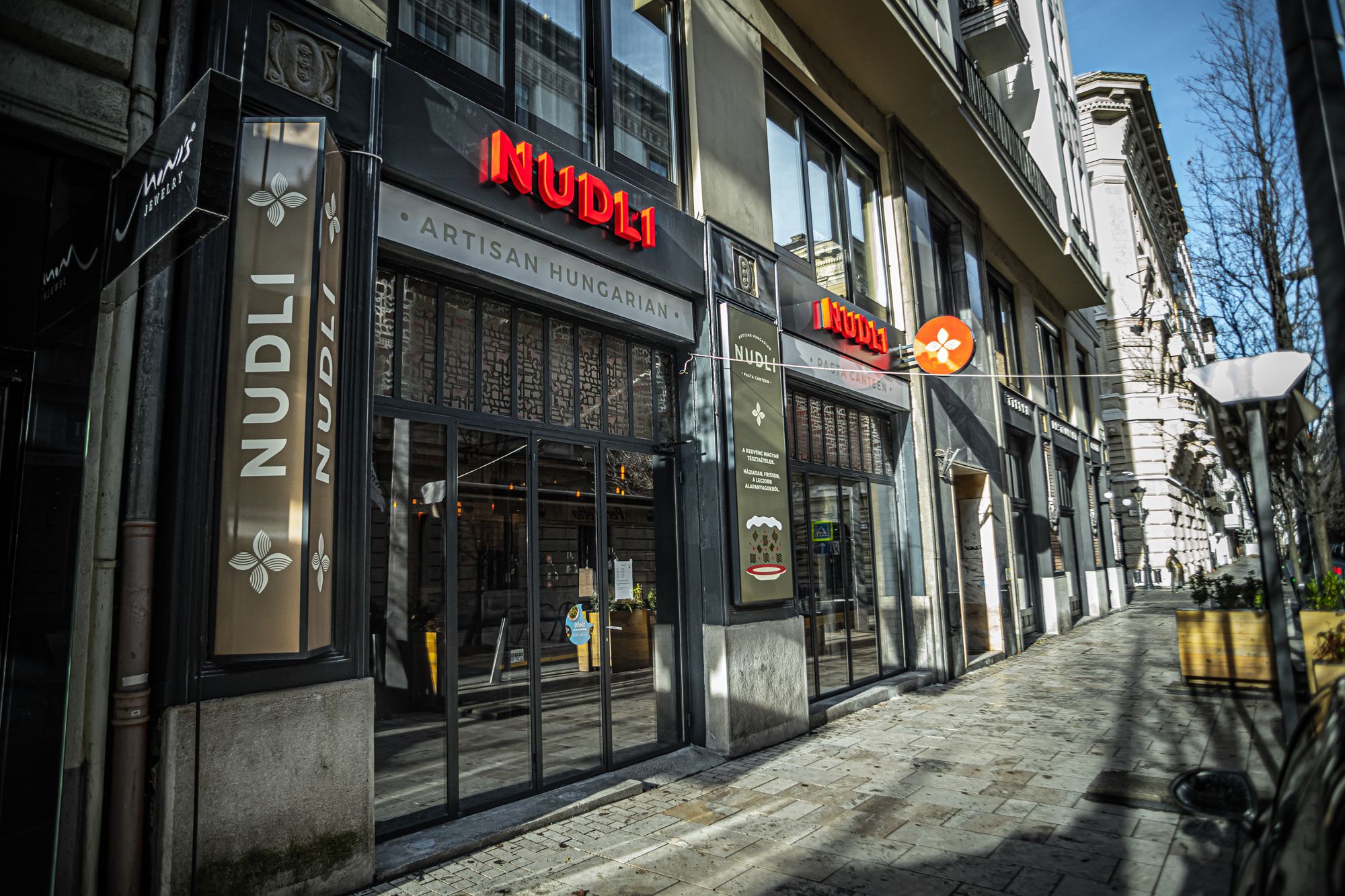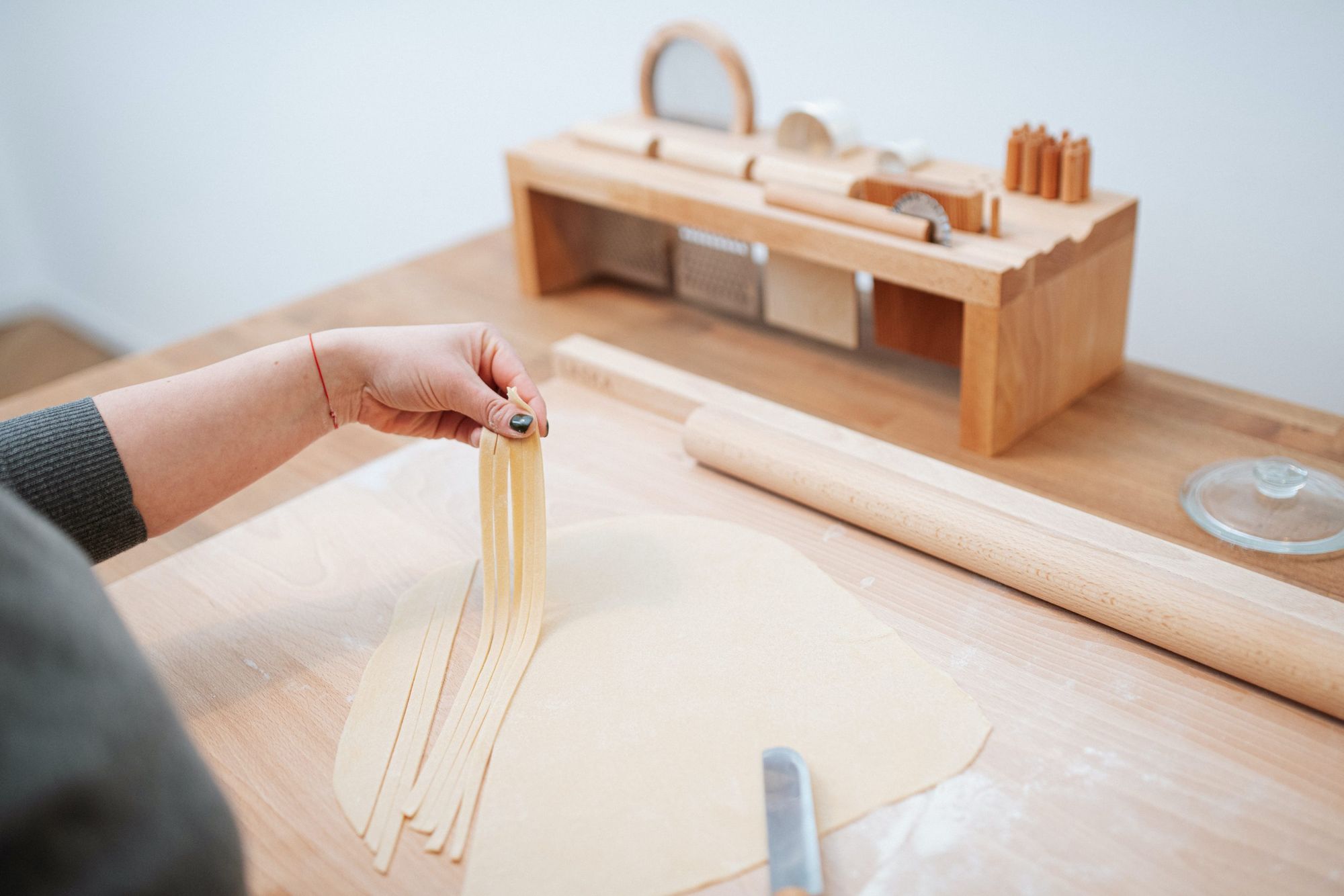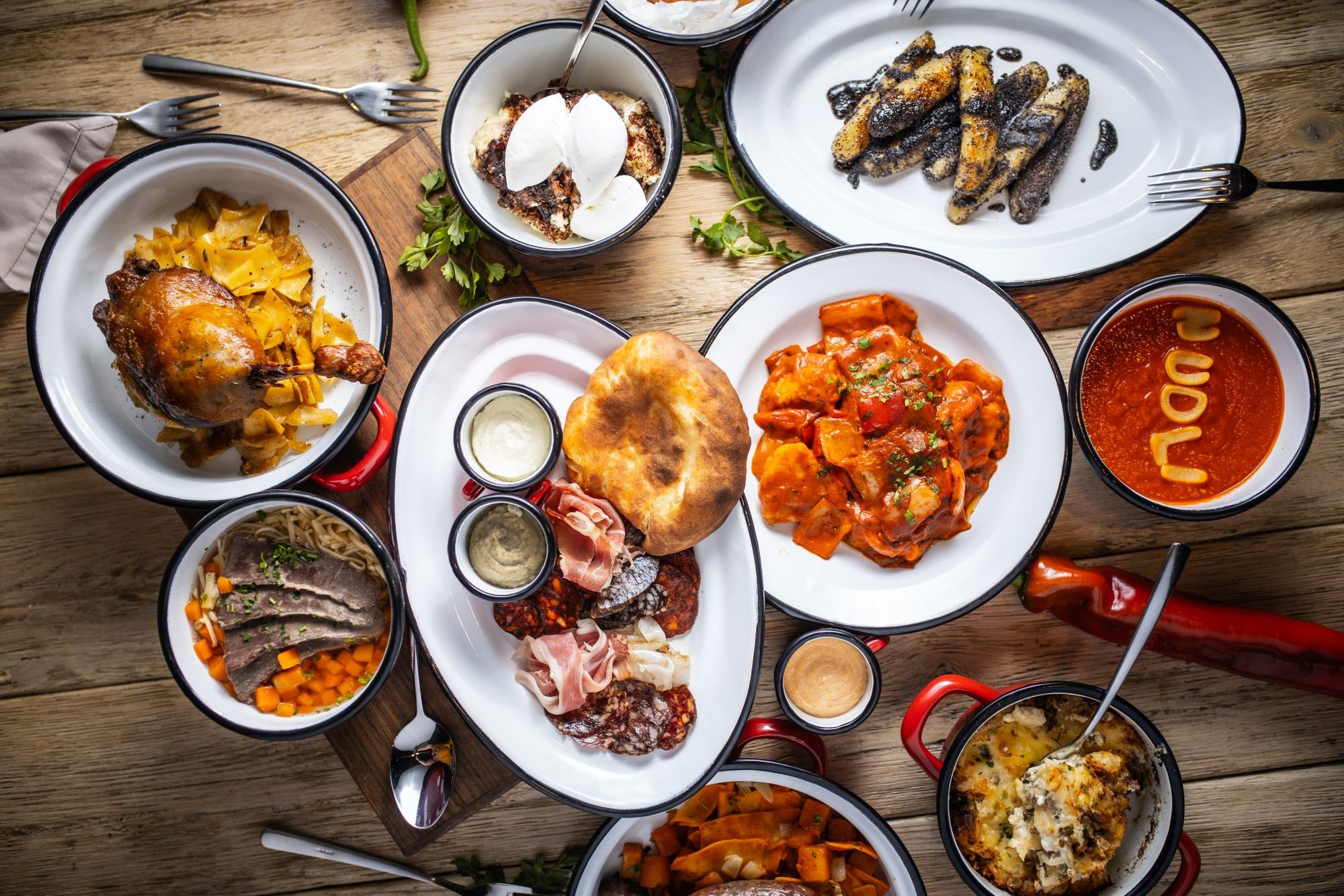In every Hungarian family, every home and every soul, there are Hungarian pasta dishes whose importance is simply unquestionable. We have been thinking of these dishes as too simple and too homely—up until now. Nudli Hungarian Artisan Pasta Canteen and Angéla Góg’s Laska research and object set are a dedicated and exciting tribute to the genre so that no one will be left without galuska!
Written by Bianka Geiger
I recently read an article about how much fuss a reinvented carbonara caused in Italy, where the triad of eggs, bacon and pecorino was jazzed up with some tomato (that’s right, without cream either). The strong emotions were, indeed, not ungrounded, as the role of pasta is undisputable in the life of the country’s citizens: it plays just as integral a part in their identity as their language.

Even though Hungarians have nothing to be ashamed of when it comes to pasta dishes either, for some reason csusza, lebbencs or galuska haven’t gotten into the spotlight up until now. Yet if we think back to our childhood, we all ate these dishes at home, when staying at grandma for the weekend, at the school canteens producing meals of varying quality, or made by ourselves for reasons of speed, convenience and cost-effectiveness, in the amazingly hectic kitchen of the dorm or our rented apartment. Perhaps this is the reason why we took our pasta dishes for granted, and considered their existence natural and evident—while the truth is they have an incredibly diverse world. The given dishes do not only vary by region, but many times the shape of the pasta used differs, too, not to mention family traditions. (Just go and ask your Hungarian friends whether túrós tészta should be served with sugar or with bacon…)
The beauty of our pasta dishes lies in the fact that they are true comfort foods: they are simple, easy to make, diverse and also filling, and thus can be a perfect course on every table. This is what András Jókuti, the author of the Világevő blog, realized a few years ago—even though he partook in a lot of gastronomic adventures all around the world and has tasted the fantastic pasta dishes of Italy and the Far East, he felt that we, Hungarians, tend to forget about our own dishes undeservingly. After doing a little research, he received a lot of positive feedback, and so he pitched his idea to Károly Gerendai, whom he knows from Gourmet Festival. It soon turned out that they “share the same table,” thus they started experimenting, designing and looking for a place. At that time, the pandemic was nowhere in sight, but Nudli Canteen’s initial concept still applies today: perfectly made Hungarian pasta dishes at an affordable price, for both Hungarian and foreign guests.

Of course, the epidemic did not make opening the canteen any easier, but the team took the risk: when walking around in Budapest’s Október 6. Street, the logo and the shop window allowing us to take a peek into the open kitchen stop us right away. The space was designed by Gáspár Bonta, while Eszter Laki, one of the favorite graphic designers of the Hungarian gastronomic scene, and studio NUR were in charge of the canteen’s visual identity. When entering the space, guests are welcomed by an amiable yet professional atmosphere, with a compact menu offering all relevant and important information starting from the various creams, through soups to the stars of the place: the sweet and savory pasta dishes. It was important that the names of the various pastas not be displayed in English either on the English menu, because túró does not equal cottage cheese and nudli isn’t gnocchi—this deliberate decision was driven by a desire to educate and to shape the country’s image. In the future, the space will also feature playful infographics that will help tourists with proper pronunciation using phonetic transcription.

Even though in the case of most pastas, there’s no consensus (except for maybe alphabet pasta, which should only be used in tomato soup according to each and every person asked), they tried to come up with recipes that can satisfy all: túrós csusza is baked with túró made by organic producers and home-made tejföl, while for the cabbage pasta, they caramelize cabbage on low fire. If one adds sugar on it, that’s perfectly okay: what matters is that the positive memories related to these dishes can come back to everyone equally. The menu also features true specialties like szombatos rakott bárány, while really hungry guests can even ask for extra toppings on their dishes. We must, of course, say a few words about mákos nudli (nudli pasta with poppyseed): the steamed fingers are placed into the box after roasting them on butter, with a generous amount of poppyseed and sugar, and are so soft that they practically melt in your mouth while the roasted parts give an extra crunch. The premium quality comes at no surprise, because the chef team of Costes (currently forced to shut down) is working in the open kitchen who prepare the ordered dishes with the perfectionism characteristic of fine dining, and the final chef team will also arrive with a similarly strong momentum. They don’t compromise either in terms of the team or the ingredients: almost everything is made on the spot and most ingredients come from the vicinity of Budapest.

Naturally, everyone is careful with planning at the moment, but in the long term, they plan to publish a cookbook or a pasta lexicon and open additional units. Perhaps the stars have aligned, because they are not the first and only ones to think of a pasta lexicon: food designer Angéla Góg DLA researched Hungarian pastas for six months in the framework of the Moholy-Nagy László Design Grant. The same as in the case of her previous studies, she once again turned to memories, the past and taste-memories: she wanted to find out how diverse the world of Hungarian dry pastas is, and whether it was possible to build a system around them and around their method of preparation, to be more accurate.
In the course of the program, she asked ordinary people just as much as manufactories and prestigious pasta factories. In her research, she found 53 types of pasta known under 122 names, and she incorporated them into a logical and transparent system. The main factors of categorization were the process of making (machine or manual), method of making (rolled, not rolled, stuffed and dribbled), shape (amorph, square, ribbon, circular, scraped, shaped of kneaded dough; in the case of stuffed pastas, the group of pasta types formed of either rolled or not rolled dough and the type formed of mixed dough) and the motion of making (rolling, cutting, twisting, scraping, grating, folding, winding, forming dumplings, dribbling and hand-shaping). By synthetizing the results, she created the Laska dry pasta making object set, which became a compact, functional tool that offers diverse use, and displays clean forms and materials. It consists of twelve elements, including a rolling pin, a rolling board, a drying tray, a pasta sieve, a measuring glass, wooden spatulas for mixing dough, pasta knife, a derelye cutter, a small and a large grater, scraping board, a csigaborda and pálca (utensils for making csigatészta) and an extra container for tools. This set allows the user to prepare any kind of dry pasta at their discretion. Angéla plans to continue her research in the near future, and hopes to complement it with a thematic publication and workshops.
Thus, it is obvious that Hungarian pasta is a very hot topic right now, and so it’s worth taking a look around in the pantry and dust off the old scraping board or at least to eat a good dish made where it is made with heart and soul and served professionally. (Nudli is currently open for takeaways, and is available via Wolt for home delivery.)
Nudli Hungarian Artisan Pasta Canteen | Web | Facebook | Instagram
Angéla Góg | Web | Facebook | Instagram

The most beautiful observation points in Eastern Europe | TOP 5

Plastic waste turns into gems of interior design | Afterlife










